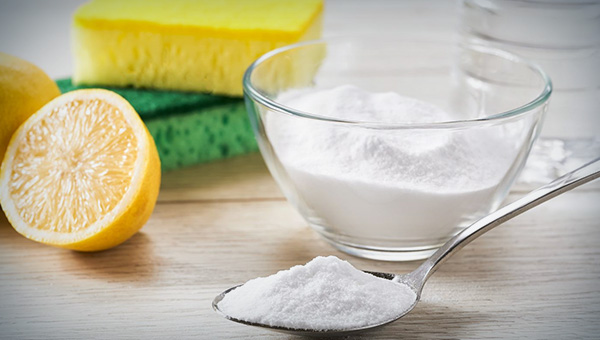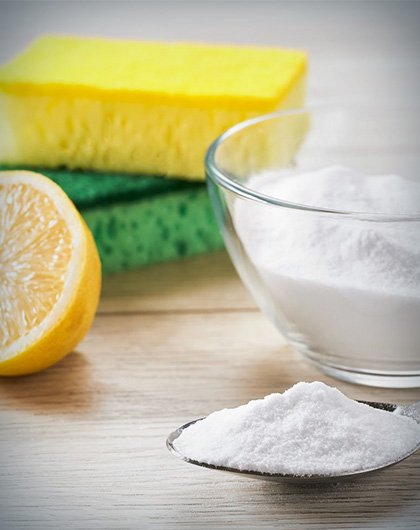
Baking soda is one of those household items everyone has lying around. It deodorizes your fridge, helps bake cookies, but what about mold? Can it really kill mold, or are we just hoping for a miracle from our kitchen cupboards? Let's take a closer look at what baking soda can do when it comes to tackling mold.
Sodium bicarbonate, also referred to as baking soda, is a mild alkali compound with chemical formula NaHCO₃. Due to the high pH levels, it alters the environment to a level where mold spores cannot grow, hence discouraging mold formation. While not as potent as some chemical-based cleaners, it has a few advantages that make it worth considering for minor mold issues:
For small patches of mold on non-porous surfaces, like bathroom tiles, baking soda can help. It absorbs moisture and helps loosen the mold so you can scrub it off. But if you're dealing with mold on porous surfaces like drywall, it's like trying to put a band-aid on a broken leg. The mold might go away for a bit, but it will likely come back because baking soda doesn't penetrate deep enough to get rid of the root cause. In this case, you most likely need to look for a professional mold treatment service.

Baking soda is cheap, environmentally friendly, and efficient in eradicating mold, and it can be applied in different locations in your house. Follow these steps to safely remove mold using baking soda:
In a spray bottle, blend 1 tablespoon of baking soda and 1 cup of water. Baking soda should dissolve in water, so before pouring it, shake the bottle very well.
This baking soda solution should then be sprayed directly on the mold-infested surface being treated. Make sure that the mixture has been well spread over the area you plan to disinfect.
To remove the mold from the surface, use a scrub brush or sponge to clean the moldy surface. Remember to put on gloves and a face mask to prevent yourself from coming into contact with the mold spores.
Once done scrubbing, wash the area with clean water to wash off any mold remaining or excess baking soda solution that may still be on the surface. For this step, use a damp cloth or sponge soaked in lukewarm water.
After washing, it's advised to spray the area with the baking soda solution once more. This will also eliminate the chance of the mold returning as baking soda has fungicides that will eliminate the fungus causing the mold.
Allow the solution to stay on the surface and dry up. This way, the baking soda will form a thin layer on the surface to prevent mold growth.
While baking soda can look like an effective solution for minor mold problems, larger or persistent mold issues can pose serious health risks and may require professional intervention. If the mold infestation is extensive or located in areas difficult to access, it is recommended to contact a mold remediation professional to ensure safe and thorough removal.
Baking soda works best on non-porous surfaces, where mold doesn't deeply penetrate. This includes materials like:
However, porous surfaces, such as drywall, untreated wood, or fabric, won't respond as well to baking soda. The mold can grow deep into these materials, where baking soda can't reach. For such cases, you may need a stronger treatment or professional help to fully eliminate the mold.
While baking soda is generally safe, using it in mold removal isn't without risks. The process of scrubbing mold can release mold spores into the air, which can irritate your respiratory system. Inhaling mold spores can cause allergic reactions, asthma flare-ups, or skin irritation, especially for those with existing respiratory conditions. According to the Centers for Disease Control and Prevention (CDC), mold exposure can cause serious health issues, especially in individuals with weakened immune systems or allergies.
Additionally, while baking soda itself isn't toxic, repeated inhalation of the powder during cleaning can cause mild irritation to the lungs. Always wear a mask and gloves when cleaning mold to minimize these risks, and ensure the area is well-ventilated.
One overlooked danger in DIY mold removal is the spread of mold spores. Scrubbing or disturbing mold can cause spores to become airborne. Once in the air, these spores can spread to other areas of your home, potentially causing new mold growth elsewhere. Mold spores that settle in HVAC systems can be circulated throughout your home, exacerbating the problem. The Environmental Protection Agency (EPA) warns that improperly handled mold can make the situation worse.
Baking soda can help with minor mold issues, but it's no match for a serious mold problem. If you're facing mold that keeps coming back, it's time to call in the pros at FDP Mold Remediation for a deeper clean.
Don't miss our latest posts on DIY mold removal methods:



